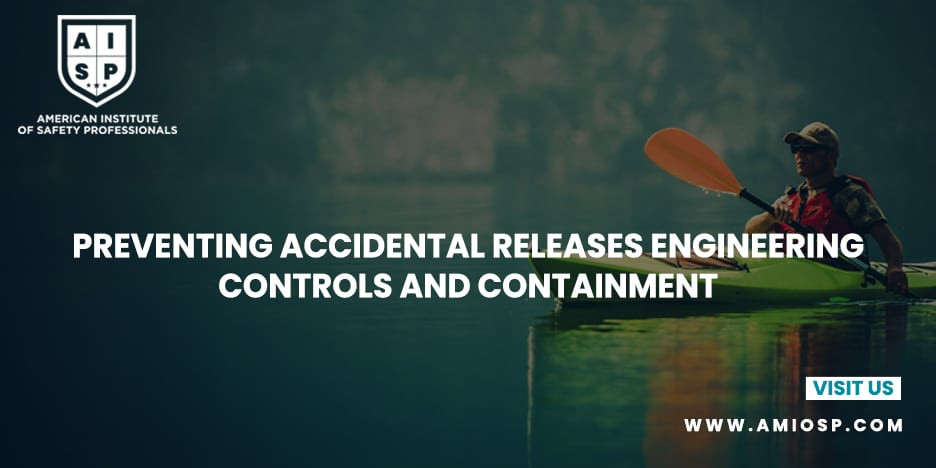Accidental releases of hazardous materials can have severe
consequences, including harm to human health, environmental damage, and
property destruction. Implementing effective engineering controls and
containment measures is essential to prevent and mitigate accidental releases.
In this blog post, we will explore the importance of engineering controls and
containment strategies in preventing accidental releases of hazardous materials.
Introduction: Understanding the Risks of Accidental
Releases
Accidental releases of hazardous materials can occur due to
equipment failures, human errors, natural disasters, or unforeseen
circumstances. These releases can result in fires, explosions, chemical spills,
or toxic gas emissions. Preventing such incidents is crucial to protect the
safety of workers, the surrounding community, and the environment.
The Role of Engineering Controls
Engineering controls play a vital role in preventing accidental
releases by minimizing the potential for hazards and providing physical
barriers to contain the materials. These controls are designed to address the
specific risks associated with the storage, handling, and processing of
hazardous materials. Some common engineering controls include:
- Process
Safety Systems: Implementing process safety systems, such as automated
monitoring and control systems, to ensure safe operating conditions and
prevent deviations that could lead to accidental releases.
- Pressure
Relief Devices: Installing pressure relief devices, such as relief
valves or rupture disks, to prevent the buildup of excessive pressure in
storage tanks or vessels, reducing the risk of explosions.
- Ventilation
Systems: Designing and maintaining effective ventilation systems to
control the release of hazardous vapors or gases, ensuring proper air
circulation and minimizing exposure risks.
- Isolation
and Interlocking Systems: Incorporating isolation and interlocking
systems that prevent unintended interactions between equipment, such as
valves and pumps, to minimize the potential for accidental releases.
Containment Strategies for Hazardous Materials
In addition to engineering controls, containment strategies
are essential for preventing and mitigating accidental releases. Containment
involves measures to confine and control hazardous materials to prevent their
escape into the environment. Some effective containment strategies include:
- Secondary
Containment: Implementing secondary containment systems, such as
berms, dikes, or containment sumps, to capture and contain spills or leaks
from storage tanks or vessels.
- Leak
Detection and Monitoring: Installing leak detection systems, such as
sensors or alarms, to quickly identify and respond to leaks, minimizing the
duration and severity of releases.
- Chemical
Storage Cabinets: Use chemical storage cabinets or safety cabinets
with appropriate ventilation and containment features to store hazardous
materials, preventing their escape in case of a spill or leak.
- Bulk
Transfer Containment: Using spill containment systems, such as drip
trays or spill berms, during the transfer of hazardous materials between
containers or during loading and unloading operations.
Risk Assessment and Safety Planning
A thorough risk assessment is crucial to identify potential
hazards and evaluate the need for specific engineering controls and containment
measures. It involves analyzing the properties of hazardous materials,
considering potential scenarios, and determining the necessary precautions.
Safety planning should include:
- Standard
Operating Procedures: Developing and implementing comprehensive
standard operating procedures (SOPs) that outline safe practices for
handling, storing, and transferring hazardous materials.
- Emergency
Response Plans: Establishing well-defined emergency response plans
that outline actions to be taken in the event of an accidental release,
including evacuation procedures, notification protocols, and containment
measures.
- Training
and Education: Providing regular training and education to employees
on the proper use of engineering controls, containment strategies, and
emergency response procedures.
Maintenance and Inspection
Regular maintenance and inspection of engineering controls
and containment systems are crucial to ensure their effectiveness. Key aspects
include:
- Routine
Inspections: Conduct routine inspections of engineering controls,
such as pressure relief devices, ventilation systems, and isolation
equipment, to identify any signs of wear, corrosion, or malfunction.
- Calibration
and Testing: Periodically calibrating and testing monitoring
equipment, such as gas detectors or leak detection systems, to ensure
their accuracy and reliability.
- Maintenance
Programs: Implementing preventive maintenance programs to address any
identified issues promptly and ensure the proper functioning of
engineering controls and containment measures.
Conclusion: Safeguarding against Accidental Releases
Implementing effective engineering controls and containment
strategies is vital to prevent accidental releases of hazardous materials. By
integrating these measures into the design, operation, and maintenance of
facilities, organizations can minimize the risks associated with handling
hazardous materials, protect human health and the environment, and enhance
overall safety. Through continuous evaluation, improvement, and adherence to
best practices, we can work towards a safer future with reduced incidents and
greater protection for all.












0 comments
No Comments